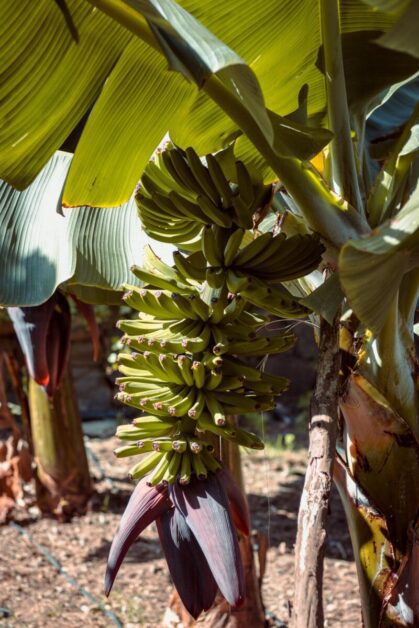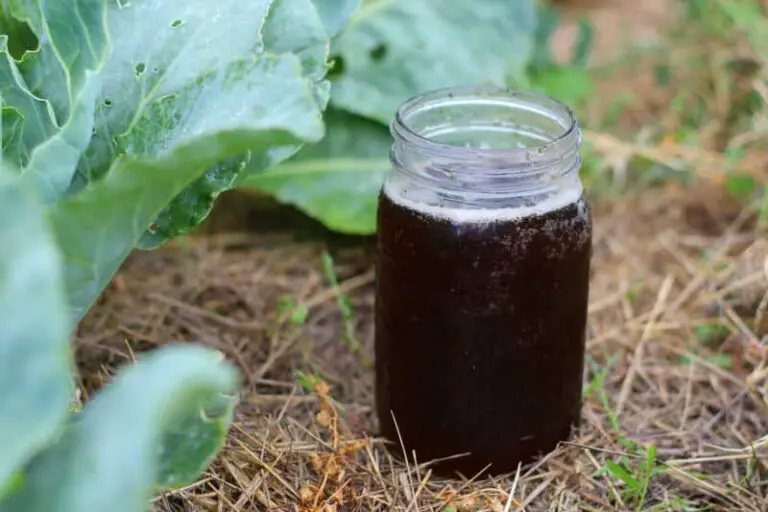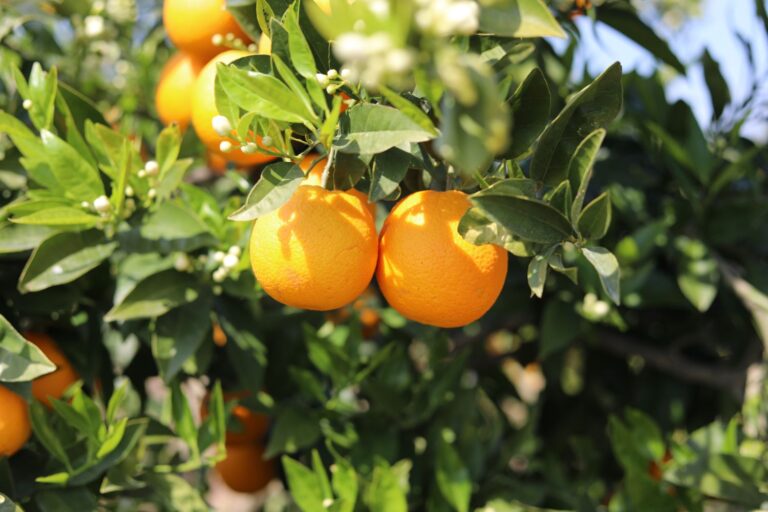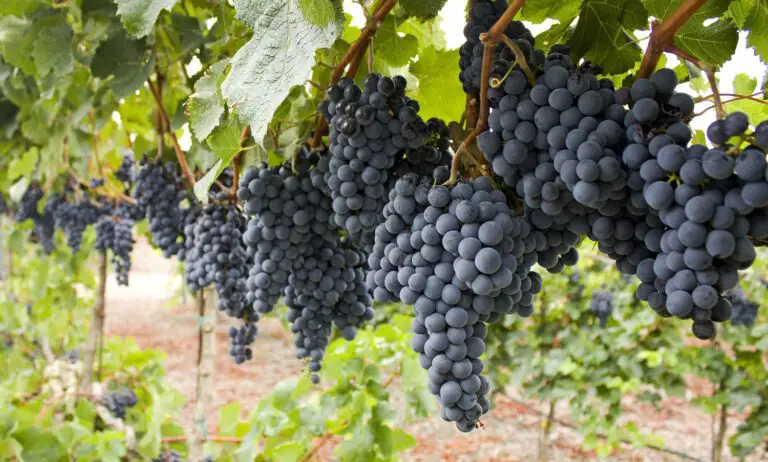Dwarf Banana Tree: A Tropical Treat for Your Garden
Table of Contents
Benefits of Growing Dwarf Banana Trees in Your Garden
Dwarf banana trees are an excellent addition to any garden, offering a multitude of benefits for gardening enthusiasts. One of the main advantages of growing dwarf banana trees is their compact size, making them suitable for gardens of all sizes, including small spaces and containers. With their lush green foliage and vibrant yellow fruit, these trees can add a touch of tropical beauty and create a focal point in your garden.
But it’s not just about aesthetics. Dwarf banana trees also offer practical benefits. For those who enjoy the satisfaction of growing their own food, having a banana tree in your garden means having a fresh supply of delicious and nutritious fruit right at your fingertips. Bananas are not only a tasty treat but also a great source of vitamins, minerals, and dietary fiber. Incorporating them into your diet can contribute to better digestion, improved heart health, and increased energy levels.
Furthermore, dwarf banana trees are relatively easy to maintain. They are hardy plants that can adapt to a variety of climates and soil conditions. Once established, they require minimal care and attention, making them an ideal choice for both gardening beginners and seasoned enthusiasts. So, whether you have limited space or simply want to enjoy the benefits of homegrown bananas, consider adding a dwarf banana tree to your garden and reap the rewards it has to offer.
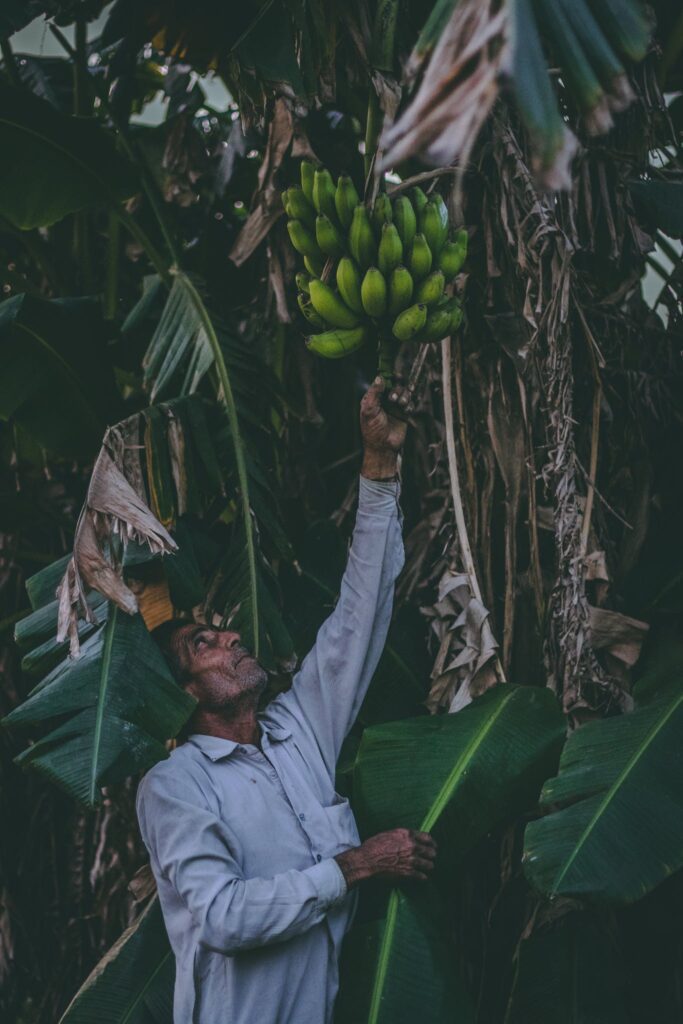
Growing Requirements for Dwarf Banana Trees
Dwarf banana trees are a popular choice for home gardeners due to their manageable size and ability to produce delicious fruits. To ensure successful growth, it is important to understand the specific requirements of these plants.
First and foremost, dwarf banana trees thrive in warm and tropical climates, preferring temperatures between 75 and 85 degrees Fahrenheit (24 to 29 degrees Celsius). They require a minimum of six hours of direct sunlight per day, although they can tolerate partial shade. When choosing a location for your tree, consider a spot that is sheltered from strong winds, as the large leaves can easily be damaged.
Another crucial aspect of growing dwarf banana trees is providing them with well-draining soil that is rich in organic matter. These plants prefer slightly acidic to neutral soil with a pH range of 5.5 to 7.0. To improve soil fertility, consider incorporating compost or well-rotted manure before planting. Additionally, mulching around the base of the tree will help retain moisture and suppress weed growth.
By following these growing requirements, you are well on your way to cultivating healthy and vibrant dwarf banana trees in your garden. Remember to provide them with the right temperature, sunlight, and soil conditions for optimal growth. In the next section, we will discuss how to choose the right variety of dwarf banana tree for your specific gardening needs.
| Requirement | Description |
|---|---|
| Sunlight | Full sun to partial shade, at least 6 hours of sunlight daily |
| Temperature | Optimal range: 75°F to 85°F (24°C to 29°C) during the day; above 60°F (15°C) at night |
| Soil | Well-draining, rich soil with organic matter content |
| Watering | Keep soil consistently moist but not waterlogged; water when top inch of soil feels dry |
| Humidity | Moderate to high humidity levels, misting may be beneficial |
| Fertilization | Regular feeding with balanced fertilizer during growing season |
| Pruning | Trim dead or damaged leaves regularly; remove spent flowers and fruit stalks |
| Pests and Diseases | Watch for pests like aphids, spider mites, and scale insects; prevent fungal diseases by maintaining good air circulation and avoiding water on leaves |
| Container Size | Large enough to accommodate root growth, with drainage holes |
| Repotting | Every 2-3 years, or when roots outgrow the container |
| Support | Stake larger plants to support heavy fruit bunches |
| Propagation | Can be propagated through division or from suckers |
| Pollination | Some dwarf banana varieties are self-pollinating, while others may require hand pollination |
| Winter Care | Protect from cold drafts and temperatures below 55°F (13°C); indoor plants may require additional humidity during winter |
Choosing the Right Variety of Dwarf Banana Tree for Your Garden
When it comes to choosing the right variety of dwarf banana tree for your garden, there are a few factors to consider. First and foremost, you’ll want to take into account your climate and growing conditions. Different varieties of dwarf banana trees have varying tolerances to temperature, humidity, and sunlight. For example, the Cavendish variety is known for its adaptability to a wide range of climates, making it a popular choice for many gardeners. On the other hand, the Brazilian variety thrives in warmer and more tropical climates.
Additionally, you should consider your preferences for fruit size, taste, and appearance. Some varieties of dwarf banana trees produce smaller, sweeter fruits, while others yield larger fruits with a milder flavor. The Red Dwarf variety, for instance, produces small bananas with a rich, sweet taste and a deep red color, while the Goldfinger variety produces medium-sized fruits that are fruity and aromatic. Consider what you enjoy in a banana and choose a variety that aligns with your taste preferences.
Ultimately, the right variety of dwarf banana tree for your garden will depend on your specific climate, growing conditions, and personal preferences. By researching different varieties and understanding their characteristics, you can ensure that you choose the perfect fit for your garden.
Preparing the Soil for Dwarf Banana Trees
Preparing the soil is a crucial step when it comes to successfully cultivating dwarf banana trees in your garden. The quality of the soil directly affects the growth and health of these plants, so it is essential to provide them with the right conditions.
Dwarf banana trees thrive in soil that is well-drained, rich in organic matter, and slightly acidic. Prior to planting, it is recommended to perform a soil test to determine its pH level and nutrient content. This will help you tailor your soil preparation to the specific needs of the plants. Adding organic matter, such as compost or well-rotted manure, can improve the soil’s structure and fertility, ensuring a nutrient-rich environment for the dwarf banana trees to thrive in. Additionally, incorporating perlite or sand into the soil can help enhance drainage, preventing the water from becoming stagnant and causing root rot.
By taking the time to prepare the soil correctly, you are setting your dwarf banana trees up for success. With a well-balanced and fertile soil, these plants will be able to establish strong root systems, absorb nutrients efficiently, and grow vigorously. So, invest in soil testing and amendments to provide your dwarf banana trees with the best possible foundation for healthy and fruitful growth.
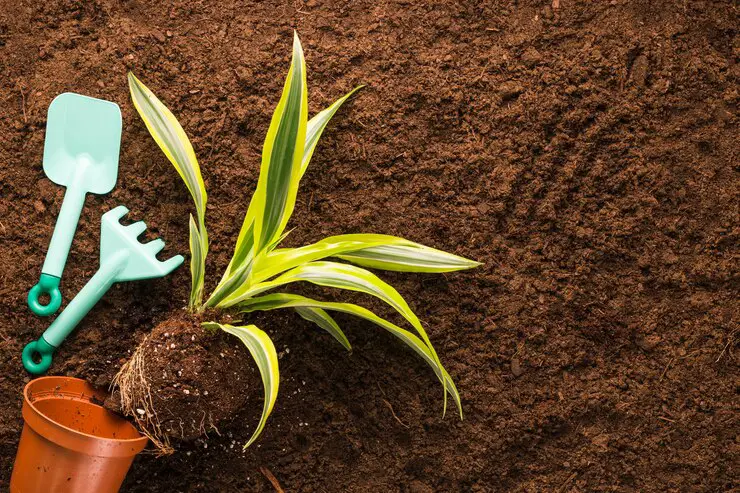
Planting and Transplanting Dwarf Banana Trees
When it comes to planting and transplanting dwarf banana trees, there are a few key factors to consider in order to ensure their success in your garden. First and foremost, it’s important to choose the right location. Dwarf banana trees thrive in full sun but also require some protection from strong winds. Select a spot that receives at least six to eight hours of direct sunlight per day, preferably with some afternoon shade.
Next, you’ll want to prepare the soil properly. Dwarf banana trees prefer well-draining soil that is rich in organic matter. Before planting, incorporate compost or well-rotted manure into the soil to improve its fertility and drainage. It’s also a good idea to conduct a soil test to determine if any specific nutrients are lacking, as this will help you make appropriate amendments.
When it comes time to plant or transplant your dwarf banana tree, dig a hole that is slightly larger and deeper than the plant’s root ball. Gently remove the plant from its container, taking care not to disturb the roots too much. Place the plant in the hole, making sure that it is at the same level as it was in its original container. Backfill the hole with soil, firming it gently around the base of the plant to eliminate any air pockets. Finally, water the tree thoroughly to help settle the soil and provide it with a good start.
By following these guidelines for planting and transplanting dwarf banana trees, you’ll be well on your way to enjoying the beauty and bounty of these tropical delights in your own garden. With proper care and attention, your dwarf banana trees will flourish and provide you with a lush and exotic addition to your outdoor space.
Watering and Fertilizing Dwarf Banana Trees
Watering and fertilizing are essential for the successful growth and development of dwarf banana trees in your garden. As a passionate gardener, you understand the importance of providing the right amount of water and nutrients to ensure the health and vigor of your plants.
When it comes to watering dwarf banana trees, it’s crucial to maintain a balance. These trees require regular watering to keep the soil consistently moist but not soggy. Over-watering can lead to root rot and other fungal diseases, while underwatering can result in stunted growth and poor fruit production. A good rule of thumb is to water deeply once or twice a week, depending on the climate and soil conditions. Consider using drip irrigation or a soaker hose to provide a slow and steady supply of water directly to the root zone.
In terms of fertilizing, dwarf banana trees are heavy feeders and benefit from regular applications of a balanced fertilizer. Look for a fertilizer with a nitrogen-phosphorous-potassium (NPK) ratio of 14-14-14 or similar. Apply the fertilizer every four to six weeks during the growing season, starting in early spring and continuing through fall. Be careful not to over-fertilize, as excessive nitrogen can lead to lush foliage but fewer fruits. Always follow the manufacturer’s instructions for proper application and dosage. Remember to water the plants thoroughly after fertilizing to avoid any potential burning of the roots. With the right watering and fertilizing practices, your dwarf banana trees will thrive and reward you with abundant harvests of delicious bananas.

Pruning and Maintaining Dwarf Banana Trees
Pruning and maintaining dwarf banana trees is essential for their optimal growth and fruit production. Regular pruning helps to keep the trees in shape, promotes air circulation, and prevents the accumulation of dead or diseased leaves. It also allows sunlight to reach all parts of the tree, ensuring even ripening of the fruit. When it comes to maintaining these delicate trees, a few key practices can make a significant difference.
Firstly, it is important to remove any dead or yellowing leaves as soon as they appear. These leaves not only detract from the overall appearance of the tree but can also act as a breeding ground for pests and diseases. By promptly removing them, you can reduce the risk of infestation and maintain the health of your tree.
Secondly, thinning out excess suckers is crucial to the overall growth and fruit production of dwarf banana trees. Suckers are the shoots that sprout at the base of the tree or at the base of the main stem. While it may be tempting to let them all grow, allowing too many suckers to develop can lead to overcrowding, nutrient competition, and stunted growth. Carefully select and retain 2-3 of the strongest suckers, removing the rest to ensure proper development and productivity.
By implementing these pruning and maintenance practices, you can enhance the health and vigor of your dwarf banana trees, leading to a bountiful harvest of delicious bananas. Stay tuned for more expert advice on protecting your trees from pests and diseases and maximizing the growth potential of your banana paradise.
Protecting Dwarf Banana Trees from Pests and Diseases
Protecting dwarf banana trees from pests and diseases is crucial in ensuring their health and productivity. These trees can be susceptible to a range of issues, but with the right measures in place, you can minimize the risks and enjoy a thriving banana garden.
One of the primary threats to dwarf banana trees is the banana aphid. These tiny insects feed on the plant’s sap, causing stunted growth and yellowing leaves. To prevent aphid infestations, it is important to regularly inspect your trees and take prompt action if you notice any signs of these pests. Introducing natural predators like ladybugs or lacewings can help control aphid populations. Alternatively, using insecticidal soaps or neem oil sprays can effectively deter and eliminate aphids. Remember to follow the instructions on the product labels for safe and effective application.
Another common issue for dwarf banana trees is fungal infections, particularly Panama disease and black leaf streak disease. These diseases can lead to wilting, yellowing, and eventual death of the plant. To minimize the risk of fungal infections, it is crucial to maintain good hygiene practices in your garden. Remove any infected leaves or plant debris promptly, as they can harbor fungal spores. Provide adequate air circulation by spacing out your banana trees appropriately. Additionally, ensure proper soil drainage to prevent waterlogged conditions, as these can promote fungal growth. If you notice symptoms of fungal infections, consult with a local extension office or qualified horticulturist for specific treatment options to suit your region and tree variety.
By implementing these preventive measures and staying vigilant, you can significantly reduce the impact of pests and diseases on your dwarf banana trees. ProteProtecting Dwarf Banana Trees from Pests and Diseasescting your trees from aphids and fungal infections will promote their overall health and increase their chances of yielding a bumper crop of delicious and nutritious bananas. So, keep a close eye on your garden, take swift action when necessary, and enjoy the rewards of your flourishing banana oasis.
Harvesting Dwarf Bananas from Your Tree
After months of patience and diligent care, the time has finally arrived to harvest your much-anticipated dwarf bananas. As you gaze upon the vibrant yellow bunches hanging from your tree, a sense of accomplishment and excitement fills the air. However, before you indulge in the sweet delight of these miniature fruits, there are a few things to consider to ensure a successful and bountiful harvest.
One crucial factor to consider is the ripeness of the bananas. To achieve the perfect balance between taste and texture, it is important to wait until the bananas have reached their optimum ripeness. A telltale sign of ripeness is when the green color begins to fade, and the skin turns a bright, sunny yellow. It is at this point that the bananas are at their sweetest and most flavorful, making it the ideal time for harvesting. However, be mindful not to wait too long, as overripe bananas can become mushy and lose some of their appeal.
To harvest the bananas, it is recommended to use a sharp pair of shears or a knife to carefully cut the bunch from the tree. It is important to avoid tugging or pulling on the bunch, as this can cause damage to the plant and affect future growth. Additionally, ensure that you leave a sufficient length of stem attached to the bunch, as this will help prolong the fruit’s shelf life. Once harvested, gently place the bunch on a flat surface, taking care to avoid any bruising or damage. Now, with your freshly harvested dwarf bananas in hand, it is time to delve into the many culinary delights and health benefits these delightful fruits have to offer.
Utilizing Dwarf Bananas in Culinary Delights
Dwarf bananas are not only a delight to grow in your garden, but they also offer a plethora of culinary opportunities. These miniature fruits are not only visually appealing but have a flavor that is often described as sweeter and more intense than their larger counterparts.
One of the simplest ways to utilize dwarf bananas in culinary delights is by enjoying them as a healthy snack. Peel back that vibrant yellow skin to reveal the creamy, tender flesh inside. Whether eaten alone or paired with other fruits, dwarf bananas are a nutritious and satisfying treat that can easily be enjoyed on the go or as a part of a balanced meal.
Health Benefits of Consuming Dwarf Bananas
Dwarf bananas may be small in size, but their health benefits are anything but. Packed with essential nutrients, these tiny fruits can provide a range of advantages for those who consume them regularly. One important benefit is their high potassium content. A single dwarf banana can contain up to 400 milligrams of this vital mineral, which is essential for maintaining proper heart function and regulating blood pressure. Incorporating dwarf bananas into your diet can help promote a healthy cardiovascular system.
In addition to potassium, dwarf bananas are also rich in dietary fiber. Just one serving can provide up to 10% of the recommended daily intake of fiber, aiding in digestion and promoting a feeling of fullness. This can be particularly beneficial for those looking to manage their weight or improve their gut health. Furthermore, dwarf bananas are a good source of vitamin C, providing about 10% of the recommended daily intake. This powerful antioxidant can boost the immune system, promote collagen production, and protect against free radical damage. With their impressive array of nutrients, it’s clear that dwarf bananas are not to be underestimated when it comes to their potential health benefits.
| Health Benefit | Description |
|---|---|
| Rich in Nutrients | Dwarf bananas are packed with essential vitamins and minerals, including potassium, vitamin C, vitamin B6, manganese, and dietary fiber. |
| Heart Health | Potassium in bananas helps regulate blood pressure, reducing the risk of cardiovascular diseases and strokes. |
| Improved Digestion | The dietary fiber content aids in digestion, prevents constipation, and supports overall gastrointestinal health. |
| Energy Boost | Bananas are a great source of natural sugars, making them a quick and efficient energy source, ideal for pre-workout snacks or mid-day boosts. |
| Mood Enhancement | Bananas contain tryptophan, a type of protein that the body converts into serotonin, promoting relaxation and improving mood. |
| Reduced Inflammation | Certain compounds in bananas have anti-inflammatory properties, potentially reducing inflammation and discomfort associated with various conditions. |
| Enhanced Athletic Performance | Bananas are often recommended to athletes for their carbohydrate content, which provides sustained energy and helps prevent muscle cramps during exercise. |
| Improved Vision | Rich in vitamin A and other antioxidants, bananas support eye health and may help prevent age-related macular degeneration and other vision problems. |
| Weight Management | Despite their sweetness, bananas are relatively low in calories and fat. Their fiber content helps you feel full for longer, aiding in weight management and satiety. |
Decorative Uses of Dwarf Banana Trees in Your Garden
Dwarf banana trees can be a stunning addition to any garden, adding a touch of tropical beauty and exoticism. With their vibrant green leaves and striking yellow fruits, these miniature trees create a lush and vibrant atmosphere that is sure to impress both you and your guests. But their decorative value extends beyond their visual appeal.
Aside from their aesthetic contribution, dwarf banana trees can also provide shade and privacy to your outdoor space. Placing a few strategically around your garden can create natural barriers, enhancing the intimacy and coziness of your outdoor sanctuary. Additionally, their broad and dense leaves can create a cooling effect, making them an excellent choice for creating a naturally shaded area where you can escape the scorching summer sun.
Moreover, dwarf banana trees have a positive impact on air quality. Like all plants, they absorb carbon dioxide and release oxygen through photosynthesis. And due to their larger size compared to other plants, dwarf banana trees are particularly effective in this aspect. So, by incorporating these trees into your garden, you not only enhance its beauty, but also help create a healthier and more oxygen-rich environment for you and your loved ones to enjoy.
In the next section, we will discuss the various ways to create a tropical oasis with dwarf banana trees, exploring different landscaping ideas and design techniques to maximize their decorative potential in your garden. Stay tuned for expert tips and inspiration on transforming your outdoor space into a paradise with the help of these marvelous trees.
• Dwarf banana trees add a touch of tropical beauty and exoticism to any garden.
• Their vibrant green leaves and striking yellow fruits create a lush and vibrant atmosphere.
• They provide shade and privacy, creating natural barriers in your outdoor space.
• The broad and dense leaves of dwarf banana trees create a cooling effect, making them perfect for creating shaded areas.
• Dwarf banana trees have a positive impact on air quality by absorbing carbon dioxide and releasing oxygen through photosynthesis.
• Incorporating these trees into your garden helps create a healthier and more oxygen-rich environment.
• In the next section, we will discuss various ways to maximize the decorative potential of dwarf banana trees in your garden.
Creating a Tropical Oasis with Dwarf Banana Trees
Transforming your garden into a tropical oasis is an exciting endeavor for any gardening enthusiast. And what better way to achieve this than by incorporating dwarf banana trees into your landscape? These stunning plants not only bring a touch of the tropics to your surroundings, but they also offer a host of benefits that make them a worthwhile addition.
One of the most striking features of dwarf banana trees is their lush green foliage, which adds vibrancy and a sense of lushness to any garden. The broad, fan-like leaves create a dramatic canopy that can provide shade and privacy, transforming your outdoor space into a tranquil retreat. Additionally, the slender trunks of these trees have a decorative appeal, adding an exotic touch to your landscape.
But the appeal of dwarf banana trees goes beyond their visual impact. These plants are also known for their ability to improve air quality. They release oxygen and absorb carbon dioxide, helping to filter out pollutants and create a healthier environment. In fact, research has shown that having plants like dwarf banana trees in your garden can improve both physical and mental well-being.
In order to create a tropical oasis with dwarf banana trees, it’s important to consider the specific requirements of these plants. From choosing the right variety to preparing the soil and providing proper care, each step plays a crucial role in ensuring their success in your garden. So let’s delve into the details and explore how you can create a captivating tropical oasis with these fascinating plants.
Tips for Overwintering Dwarf Banana Trees
In order to successfully overwinter dwarf banana trees, it is important to understand their specific needs during the colder months. These tropical plants require some extra care to ensure their survival and flourishing growth. Here are some valuable tips to help you properly overwinter your beloved dwarf banana trees.
First and foremost, it is crucial to provide the right temperature for the plants. Dwarf banana trees are extremely sensitive to cold temperatures and cannot tolerate frost. Therefore, it is recommended to bring the potted banana trees indoors when the temperature drops below 50°F (10°C). Find a warm spot in your home, such as near a south-facing window or in a heated greenhouse, where the plants can be protected from the cold.
Secondly, lighting plays a significant role in the overwintering process. Dwarf banana trees rely on bright, indirect sunlight for optimal growth. During the winter months when daylight is limited, consider supplementing their light requirements by using artificial lighting, such as grow lights. Position the lights about 12 to 18 inches above the plants and provide them with 10 to 12 hours of light per day.
Remember, caring for dwarf banana trees during the winter is essential for ensuring their health and vitality. By following these tips and providing the right conditions, you can enjoy the beauty of these tropical plants year-round and be rewarded with their lush foliage and delicious fruits. Stay tuned for more expert advice on cultivating and maintaining your dwarf banana trees.
Sharing the Joy of Dwarf Banana Trees with Friends and Family
Sharing the joy of dwarf banana trees with friends and family is a wonderful way to bring beauty and excitement to any garden. These miniature wonders not only provide a tropical ambiance but also offer a bountiful harvest of delicious fruits. As a gardening enthusiast, you can take pride in showcasing your expertise and the rewards of your hard work by inviting your loved ones to experience the magic of these remarkable trees.
Imagine your loved ones strolling through your garden, captivated by the sight of lush green foliage and vibrant yellow fruits hanging delicately from the branches of your dwarf banana trees. They will be astounded by the tropical oasis you have created right in your backyard. Moreover, sharing the joy of picking fresh, homegrown bananas together can be a delightful bonding experience that creates lasting memories for everyone involved. From the awe-inspiring beauty of the trees to the excitement of harvesting and enjoying the fruits, your friends and family will be enchanted by the unique charm that dwarf banana trees bring to your garden.
So why not share the joy of dwarf banana trees with your loved ones? Not only will you inspire and educate them about the wonders of gardening, but you will also create an opportunity for them to connect with nature and indulge in the delightful flavors of homegrown bananas. Whether it’s through a garden party, a casual gathering, or even gifting a potted dwarf banana tree, you can spread the happiness and fulfillment that comes from cultivating these fascinating and fruitful plants. By sharing your knowledge, passion, and the fruits of your labor, you can introduce your friends and family to the joys of dwarf banana trees and enrich their gardening experiences.
What are the benefits of growing dwarf banana trees in your garden?
Dwarf banana trees provide a tropical aesthetic, produce delicious fruit, and are smaller in size, making them suitable for gardens with limited space.
What are the growing requirements for dwarf banana trees?
Dwarf banana trees thrive in warm climates with full sun exposure, well-drained soil, and regular watering. They also require protection from strong winds.
How do I choose the right variety of dwarf banana tree for my garden?
Consider factors such as the climate in your area, the size of the tree, and the flavor of the fruit when selecting a variety of dwarf banana tree.
How should I prepare the soil for dwarf banana trees?
Prior to planting, ensure the soil is rich in organic matter, well-drained, and has a pH level of around 6 to 7. Adding compost or well-rotted manure can improve the soil quality.
How do I plant and transplant dwarf banana trees?
Dig a hole that is twice the size of the root ball, place the tree in the hole, and backfill with soil. When transplanting, be sure to carefully remove the tree’s root ball to minimize damage.
How often should I water and fertilize dwarf banana trees?
Water the trees regularly, keeping the soil moist but not waterlogged. Fertilize every two to three months during the growing season with a balanced fertilizer high in potassium.
Do dwarf banana trees require pruning and maintenance?
Yes, remove any dead or damaged leaves regularly, and trim back any excessive growth to maintain a manageable size. Pruning can also help improve air circulation within the tree.
How can I protect dwarf banana trees from pests and diseases?
Inspect the trees regularly for signs of pests such as aphids or spider mites. Use organic pest control methods or insecticidal soaps to manage infestations. Ensure proper sanitation to prevent diseases.
When is the right time to harvest dwarf bananas from the tree?
Dwarf bananas are usually ready for harvest when they turn yellow and can be easily peeled. Harvest the fruit when it reaches its desired ripeness, depending on personal preference.
How can I utilize dwarf bananas in culinary delights?
Dwarf bananas can be used in various recipes like smoothies, banana bread, or as a topping for breakfast bowls. They can also be enjoyed fresh or frozen for later use.
What are the health benefits of consuming dwarf bananas?
Dwarf bananas are a good source of essential vitamins, minerals, and dietary fiber. They can aid in digestion, promote heart health, and provide a natural energy boost.
How can dwarf banana trees be used decoratively in the garden?
Dwarf banana trees add a tropical touch to gardens with their lush foliage. They can be used as focal points, in container gardening, or to create a beautiful backdrop for other plants.
How can I create a tropical oasis with dwarf banana trees?
Plant dwarf banana trees alongside other tropical plants like palms, ferns, or hibiscus to create a lush and vibrant tropical oasis in your garden.
What are some tips for overwintering dwarf banana trees?
Before winter arrives, cut back the foliage, mulch around the base of the tree, and move potted trees indoors if necessary. Avoid exposing the trees to freezing temperatures.
How can I share the joy of dwarf banana trees with friends and family?
You can share the joy of dwarf banana trees by giving away excess fruit, providing tree care tips, or even gifting young banana plants to your loved ones.

Ankit Garg is a seasoned writer at South El Monte Hydroponics, blending his passion for agriculture with a penchant for storytelling. With a degree in Agricultural Sciences from a prestigious institution, Ankit’s expertise lies in hydroponics, sustainable farming, and innovative cultivation techniques. His keen interest in exploring the intersection of technology and agriculture has led him to delve deep into the realm of hydroponic farming, where he thrives in uncovering the latest advancements and sharing insights through his engaging prose. Ankit’s dedication to promoting eco-friendly and efficient farming practices through his writing has earned him recognition within the agricultural community and beyond.

